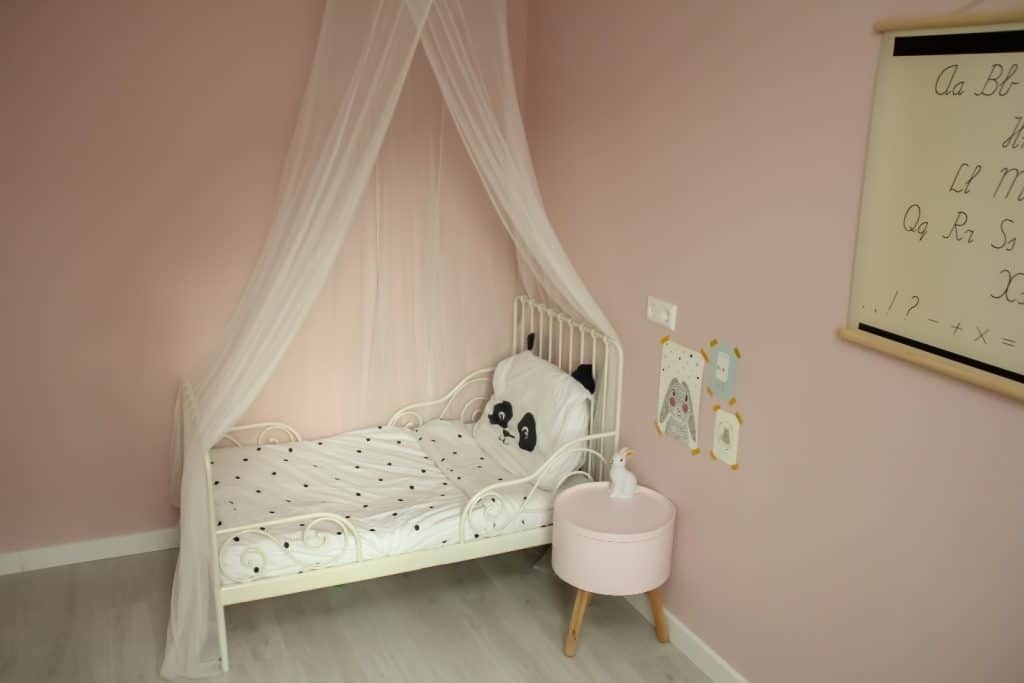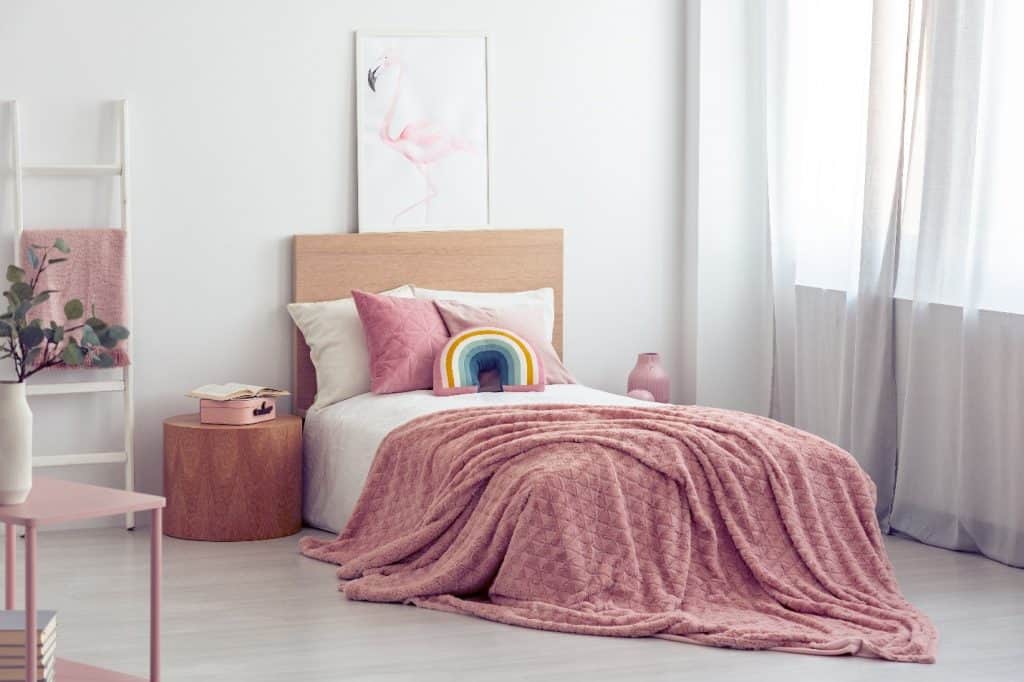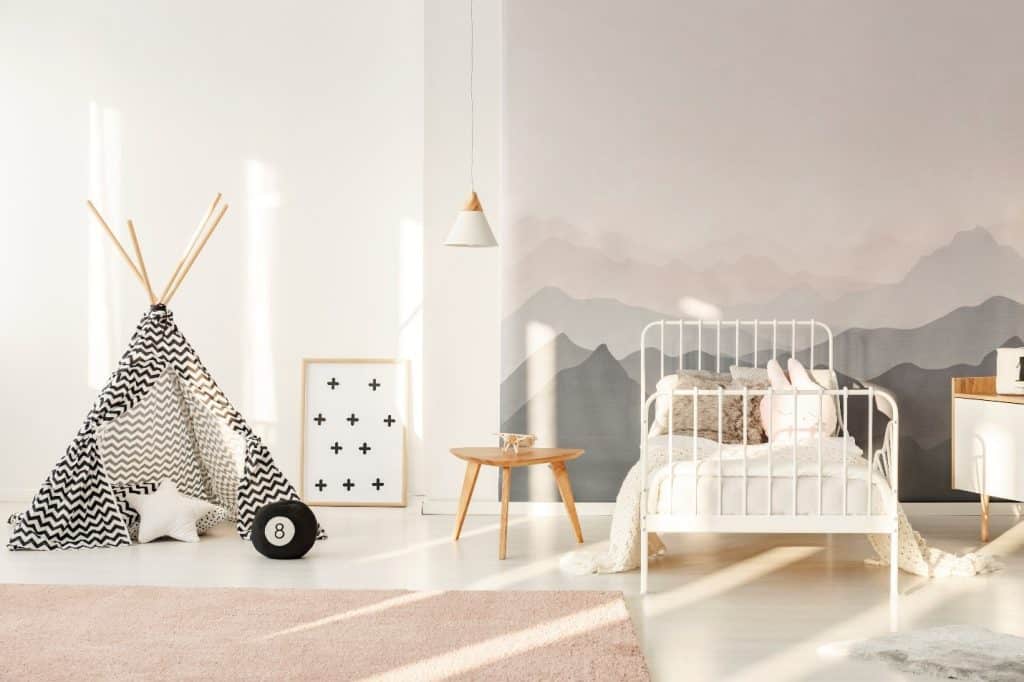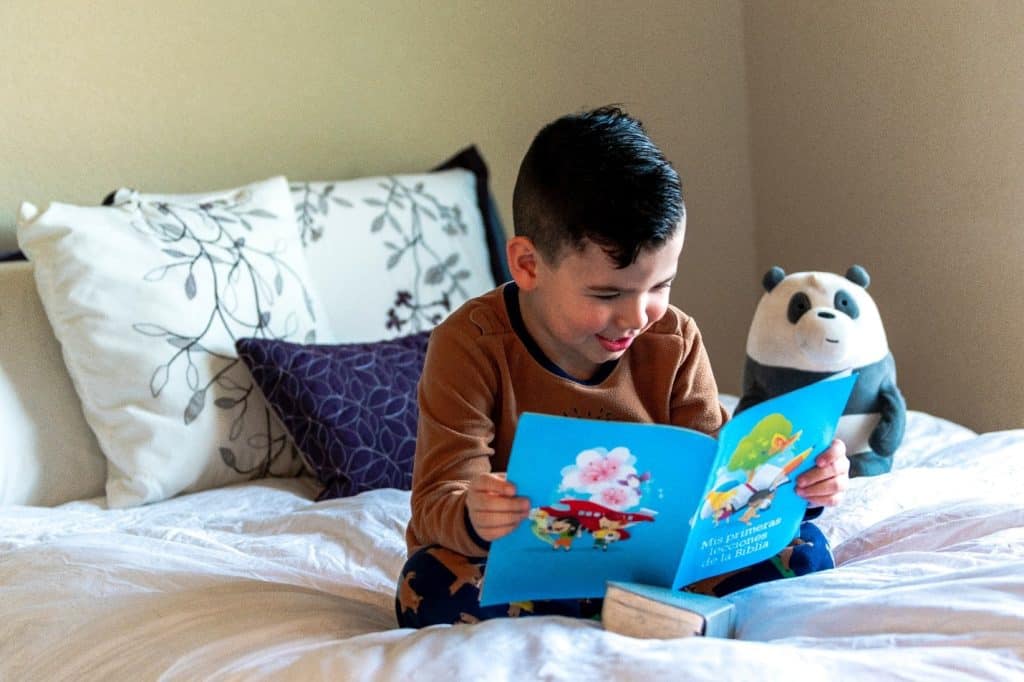While you may wish for your little one to remain an adorable baby, they will eventually become a toddler in no time. As the growing baby outgrows their crib, you will have to choose the next bed for your toddler. However, there are two popular choices to choose from: toddler bed VS twin bed.
Toddler beds and twin beds have inherent differences that result in certain pros and cons. Firstly, toddler beds are smaller. While a smaller size makes them space-efficient, it limits their lifespan as the toddler outgrows them quickly. Designed for toddlers, these beds are safe and come in fun designs.
On the other hand, twin beds are larger. More space means more room for growth, but it also means twin beds take up a lot of room. They will last your kid for many years and finding beddings that fit will be easy. However, the transition from a crib to a twin bed can be abrupt for a toddler.
This article will detail the several pros and cons of toddler beds vs twin beds to help you decide which is the best option for your child.
Toddler Bed VS Twin Bed – Which One to Pick?
What is a Toddler Bed?

As its name suggests, a toddler bed is a small bed designed for toddlers. Toddler beds are often the first real beds children have after outgrowing a crib. The transition out of a crib usually takes place between one to two years of age.
Designed with young children in mind, toddler beds often come with design features addressing certain concerns. For example, it is not uncommon to find toddler beds with side rails to help prevent toddlers from rolling out of bed.
Additionally, it is also relatively easy to find toddler beds that come in a myriad of aesthetic designs aimed to satisfy children. A classic example would be a toddler bed in the shape of a racecar.
What is a Twin Bed?

Unlike a toddler bed, twin beds are not specifically designed for children. A twin bed is simply the smallest standard-sized bed. After twin beds, the next standard bed sizes include full, queen, and king beds.
Twin beds are also known as single beds. Unlike the larger sizes, twin beds are typically designed for a single person. When positioned side by side, two twin beds together essentially form one king-sized bed.
These beds are commonly found in rooms designed for a sole occupant. Due to their small size, they make great beds for rooms in need of space efficiency.
Differences Between Toddler Bed VS Twin Bed
To fully understand the pros and cons between a toddler bed VS a twin bed, it is important to determine the differences between the two.
-
Size
Perhaps the first factor that primarily differs between toddler beds VS twin beds is size. Although twin beds are the smallest standard-sized beds after cribs, toddler beds are still understandably smaller as they are designed for young children.
You should be able to find twin beds in the standard dimensions (38 inches wide X 74.7 inches long). However, you can also find a variant called twin XL that has a slightly different size (36 inches wide X 79.6 inches long).
On the other hand, toddler beds are significantly smaller. Although they do not come in standardized sizes, one would be able to find toddler beds about 28 inches wide by 55 inches long. Some toddler beds might be bigger while some might be smaller.
-
Features
Twin beds come with as many features as typical beds do – essentially nothing. The defining feature of a twin bed is its size and nothing more.
Since toddler beds are specifically designed for toddlers, it is expected that toddler beds come with a wide array of features that are geared toward toddlers’ safety and satisfaction.
As mentioned above, it is not uncommon to find toddler beds with low side rails to prevent toddlers from accidentally rolling off the bed. While some side rails are permanently attached, some toddler beds have detachable side rails allowing for adaptability.
Aesthetically, toddler beds also come in a wider variety of design options as manufacturers try to cater to the parents’ desires to match their children’s toddler beds to their rooms.
-
Safety
Lastly, one should expect a difference in safety between a toddler bed VS a twin bed. Since toddler beds are designed for children, safety is a higher priority when it comes to manufacturing them.
Firstly, the option to get side rails for toddler beds already offers a degree of safety that twin beds do not.
Secondly, manufacturers can get various safety certifications to inform parents how safe their products are. For example, toddler beds can come with GREENGUARD certification to signify chemical emission standards. The Juvenile Products Manufacturers Association also certifies products for safety.
Toddler Bed Pros

Space Efficiency
Although toddler beds are indeed larger than crib mattresses, they are still significantly smaller than twin beds. This smaller size makes toddler beds incredibly space-efficient as parents are able to position the toddler bed in the nursery in many ways.
With the toddler bed taking up less space in the child’s room, more space is left for other furniture, a playing area, and a lot of toys.
Safety
As mentioned above, one of the biggest differences between a toddler bed VS a twin bed is safety. Toddler beds come with a variety of features that ensure the safety of your child. These safety features include side rails, non-toxic paint, and safe manufacturing.
Gradual Transition
Another reason why many parents opt to get a toddler bed after a crib is to slowly ease the child with the transition. Some find the transition from a crib to a twin bed to be too abrupt. Thus, a toddler bed seems to be a great way to ease a toddler into a more adult bed.
Aesthetic
Lastly, toddler beds come in fun designs that allow children to truly express themselves. While the typical example of a toddler bed is the racecar bed, parents will be grateful to find toddler beds in all kinds of designs. This makes it easier to find an aesthetic that will surely match well with the nursery.
Toddler Bed Cons
Longevity
While the smaller size of a toddler bed offers some advantages, it has downsides too. A smaller bed, such as a toddler bed, will have a shorter lifespan as your child will outgrow it sooner than a twin bed.
Cost
Although it is a separate con, the cost is definitely connected to the shorter lifespan of the toddler bed. Spending on something that will not last as long as a twin bed will mean a toddler bed would be an additional expense to worry about.
Twin Bed Pros
Longevity
While a toddler bed will not last your toddler for long, a twin bed will surely be a long-term investment. Since twin beds are significantly larger than toddler beds, you can expect your child to be able to use a twin bed for many years to come.
Standard Size
While toddler beds come in a variety of sizes, twin beds will always be 38 inches wide X 74.7 inches long. This makes it incredibly easy to get bed sheets and comforters that fit perfectly.
Space

A twin bed is a significant upgrade compared to a crib. Your child will have plenty of space in their new twin bed for all their favorite toys.
Furthermore, parents love twin beds because twin beds have enough space to allow cuddles. Toddler beds are oftentimes too small for parents to cuddle with their children in. Parents who value quality time cuddling should seriously consider twin beds over toddler beds.
Twin Bed Cons
Safety
While twin beds are not necessarily unsafe, they simply do not offer the same degree of safety features as toddler beds. Although the lack of a safety net can help teach your child to be more careful, it does not help ease a parent’s worries.
Space
Just like how the size of toddler beds offers both pros and cons, so does the size of twin beds. The large space afforded by the twin bed provides the child with ample space for comfort and toys. However, the larger twin bed will take up more space in the room.
A room that is already limited in space might suffer greatly from the addition of a twin bed.
Abrupt Transition
While the toddler bed offers your child a more gradual transition from the crib, you can consider the twin bed to be a more abrupt transition. Twin beds are essentially adult beds, and it might take some time before your child fully adjusts to them.